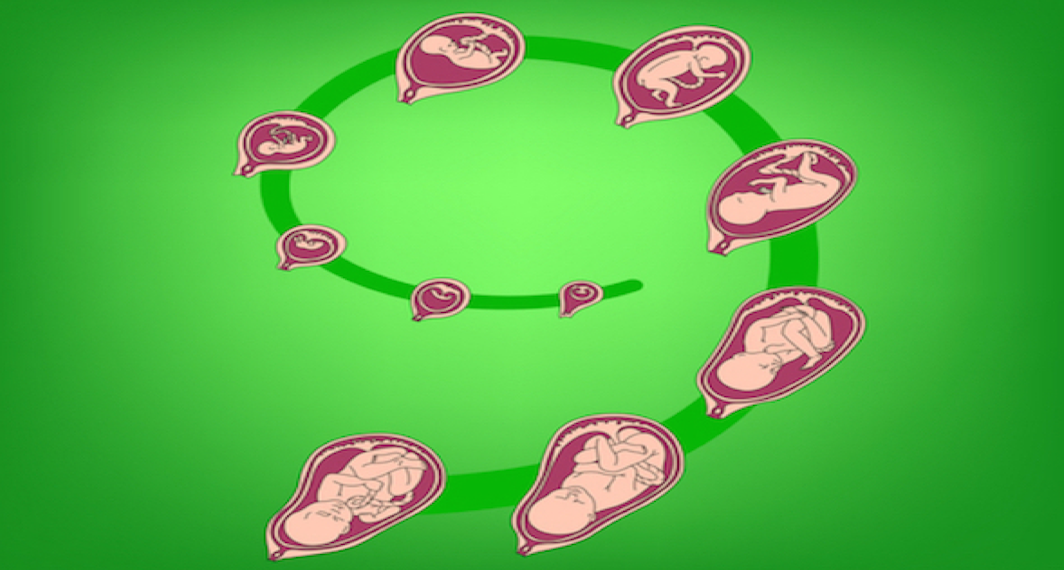A Week By Week Look At Your Pregnancy’s Third Trimester And Your Baby’s Development
Prenatal care is just as important in the third trimester of pregnancy…

Prenatal care is just as important in the third trimester of pregnancy (28 weeks until delivery) as it is during the first and second trimesters. Usually, you’ll be seeing your healthcare provider once every two weeks until you reach your 34-36th weeks. Thereafter you’ll probably have a visit once a week.
Monitoring your blood pressure and weight more frequently is important. Blood pressure tends to increase, to the pressure you had in your first trimester. This is the time during which pre-eclampsia (you may have heard it called toxemia) can develop, the first sign of which is elevated blood pressure. Your provider will listen for the baby’s heartbeat and check movement. You may be asked to keep track of your baby’s movement, especially how often you feel movement. You’ll be asked to report it to your provider if the movements slow down substantially.
You’ll be screened for group B streptococcus (GBS). GBS is a common bacterium. It’s usually harmless, but in newborns it can cause serious illness, even death. Your healthcare provider will obtain a specimen by swabbing the lower vagina and anal area. The specimen is sent to a lab for testing. If the sample test is positive for GBS, or in the past you gave birth to a baby who became infected with the bacterium, you’ll be treated with antibiotics given intravenously (directly into the bloodstream) during labor and delivery. The antibiotics will help protect your baby from the GBS.
As you get closer to delivery your visits to your provider may include pelvic exams. The provider feels the cervix to check for the changes which occur as you near delivery.
The baby’s position can be felt as well. Usually by the 36th week of pregnancy, your baby is settling in a head-down position. The hard skull can be felt near the pubic bone. Your baby’s bottom can be felt at the top of the uterus. It’s roughly the size and shape of the head, but softer.
Some babies don’t settle into the normal, head down position. If the feet or rump are leading the way into the birth canal (breech), the doctor may try to turn the baby to the head-down position by applying pressure on the abdomen – a procedure called a “version.” If the baby stays in a breech position, your doctor may consider a cesarean delivery (C-section). The head is the largest part of an infant. With a breech delivery, the head can get stuck in the uterus. It’s a true obstetrical emergency, a race to return the baby’s body to the uterus and do a C-section, before the baby or mother suffer harm.
28 Weeks: Your baby’s eyelids are opening and eyelashes appear. (S)he is about 10 inches long and weighs about 2 ¼ pounds. Otherwise healthy babies, if born at 28 weeks, have a greater than 90 percent chance of surviving without physical or neurological problems, and that chance improves every day.
30 Weeks: Your baby’s eyes are open much of the time. (S)he probably has a full head of hair. Red blood cells are forming in the baby’s bone marrow. Crown to rump size is about 10 ½ inches, and weight is nearly three pounds.
32 Weeks: Although your baby’s lungs aren’t fully mature, he or she practices breathing, and the body begins absorbing vital minerals – iron and calcium. Size is about 11 inches, and may weigh 3 ¾ pounds.
34 Weeks: Your baby can detect light entering the eyes. Fingernails reach the fingertips. Your baby may be nearly 12 inches. The greasy white coating – the vernix caseosa – starts getting thicker.
36 Weeks: Your uterus is getting crowded, making it harder for the baby to punch or kick you, but you’ll still feel plenty of rolling and stretching. If you think the movements are decreasing in frequency, tell your healthcare provider. You may be advised to do “kick counts,” – counting the number of movements in a certain number of hours. Your baby’s head may have settled into the head down position, in preparation for birth. If not, your doctor may discuss options for trying to help the baby move into the head down position, or planning delivering by a C-section.
39 Weeks: Your baby has a firm grasp, the chest is becoming more prominent. In boys, the testicles continue settling into the scrotum. The placenta supplies the baby with antibodies, which help fight infection after birth. Breast milk will also supply antibodies.
40 Weeks: Your baby is about 18-20 inches in length and weigh about 6 ½ pounds. Healthy, full-term babies come in a broad range of sizes. If you haven’t delivered by your due-date, your healthcare provider will discuss plans for birth with you. There’s no need for alarm; very few women deliver on their due date – delivery is usually a little before, or a little after, your due date.

